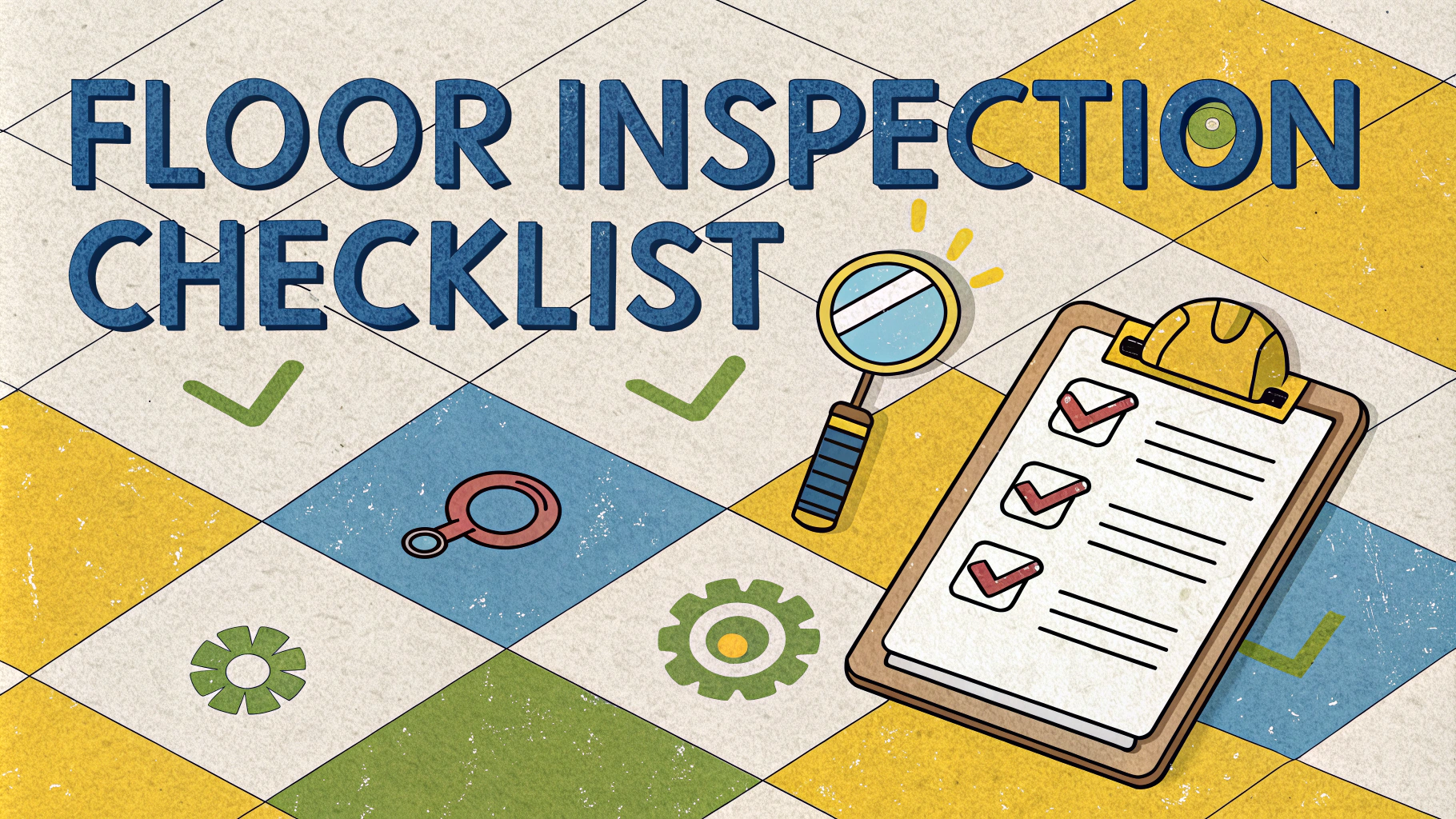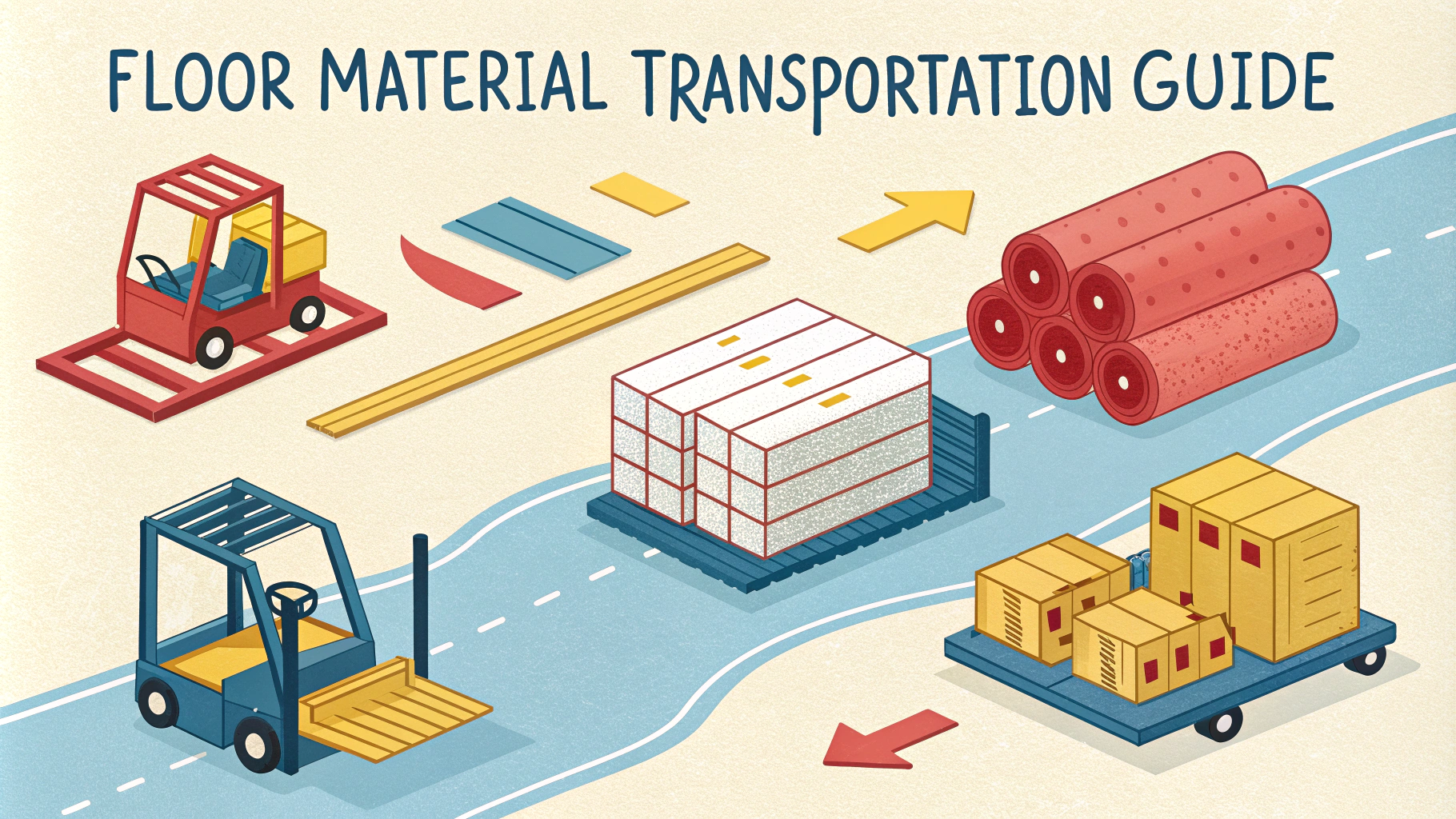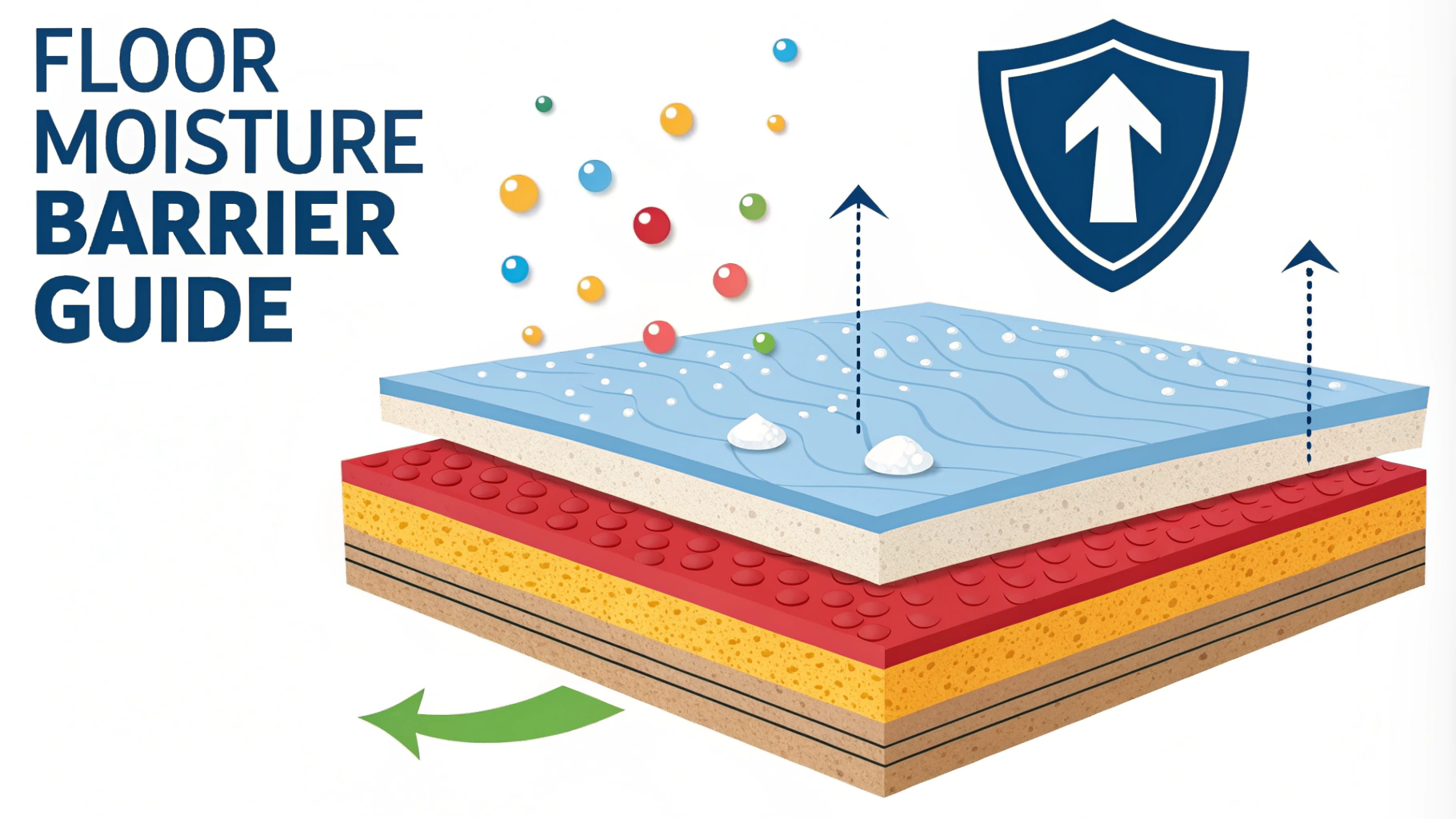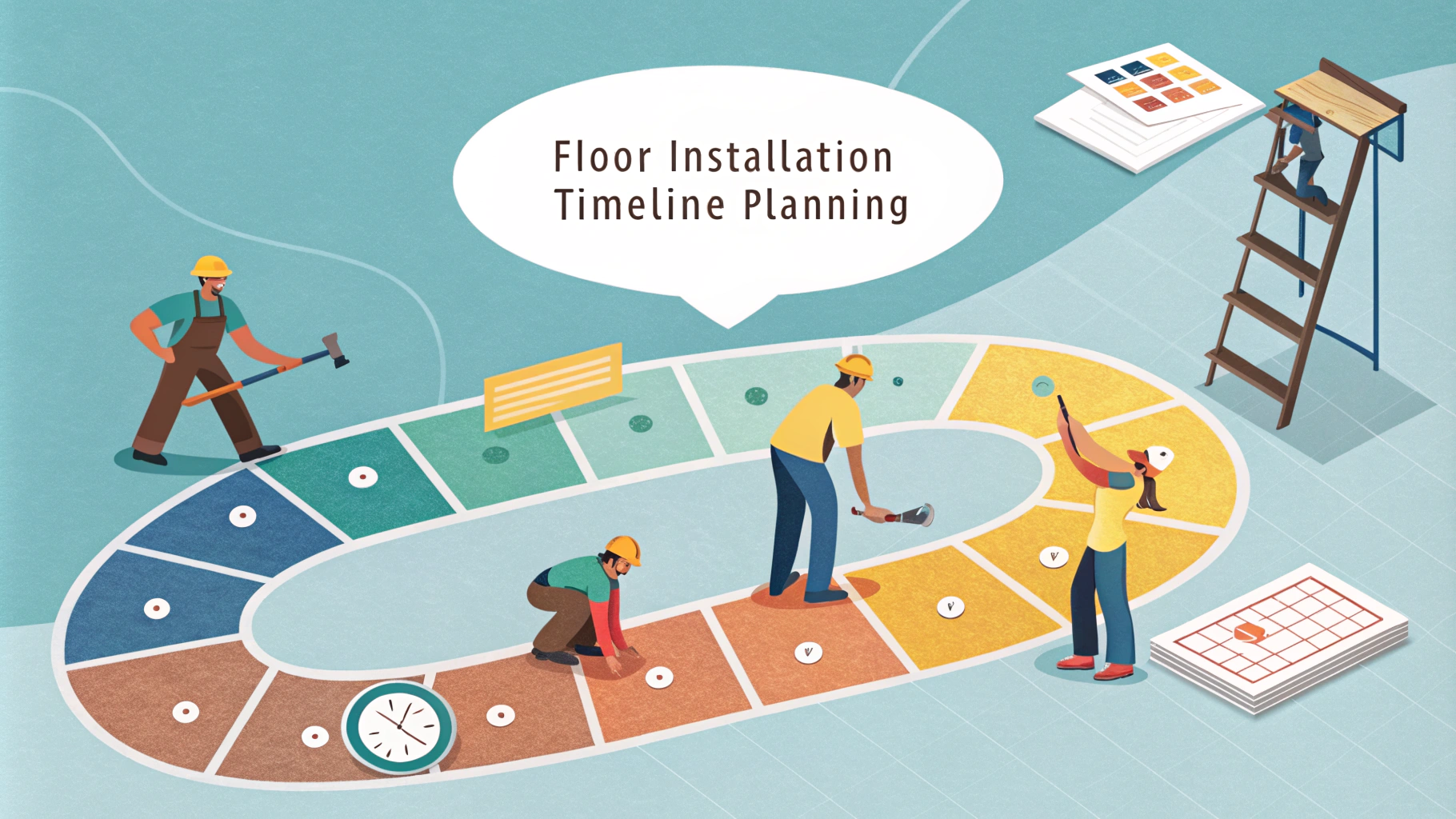Floor damage can happen to any home, from minor scuffs to major structural issues that need immediate attention.
Understanding how to properly diagnose and fix common flooring problems can save substantial money on professional repairs while maintaining your home’s value and appearance.
This quick guide covers the most frequent floor issues and provides step-by-step solutions for DIY repairs across different flooring types.
Common Hardwood Floor Problems
- Scratches and Scuffs
- Light scratches: Use wood markers or fill sticks
- Deep scratches: Apply wood putty and sand
- Prevention: Use furniture pads and regular maintenance
- Squeaky Boards
- Fix from above: Drive screws through boards into joists
- Fix from below: Install shims between joists and subfloor
- Water Damage
- Minor: Dry thoroughly and sand affected area
- Severe: Replace damaged boards
Laminate Flooring Repairs
- Chips and Dents
- Use color-matched repair putty
- Apply laminate repair paste for larger areas
- Separation Between Planks
- Tap boards together using tapping block
- Check expansion gaps around walls
Tile Floor Solutions
- Cracked Tiles
- Small cracks: Fill with epoxy
- Large cracks: Remove and replace tile
- Loose Grout
- Remove old grout with grout saw
- Clean thoroughly
- Apply new grout
Carpet Repair Tips
- Burns and Small Holes
- Cut out damaged area
- Replace with matching carpet patch
- Secure with carpet tape or adhesive
- Wrinkles and Bubbles
- Rent a carpet stretcher
- Reattach to tack strips
When to Call a Professional
Contact a licensed flooring contractor for these situations:
- Structural floor issues
- Large-scale water damage
- Mold presence
- Uneven subfloor
Tools and Materials Needed
| Flooring Type | Essential Tools |
|---|---|
| Hardwood | Wood putty, sandpaper, wood markers, screwdriver |
| Laminate | Repair putty, tapping block, pull bar |
| Tile | Grout saw, new grout, epoxy, tile cutter |
| Carpet | Utility knife, carpet tape, stretcher |
Next Steps for Floor Maintenance
Implement these preventive measures to extend your floor’s life:
- Regular cleaning schedule
- Use appropriate cleaning products
- Install door mats at entrances
- Address spills immediately
- Schedule annual professional inspections
Cost Considerations
Compare repair costs before deciding between DIY and professional services:
| Repair Type | DIY Cost Range | Professional Cost Range |
|---|---|---|
| Minor Scratches | $10-30 | $100-200 |
| Board Replacement | $50-150 | $300-500 |
| Tile Repair | $25-75 | $200-400 |
| Carpet Patching | $20-60 | $150-300 |
Safety Precautions
- Wear protective gear
- Safety glasses
- Dust mask
- Work gloves
- Proper ventilation
- Open windows
- Use fans when working with adhesives
- Tool safety
- Follow manufacturer instructions
- Keep tools maintained
- Store properly after use
Preserving Your Investment
Floor maintenance is essential for protecting your home’s value and ensuring long-lasting results from repairs. Regular inspections and prompt attention to minor issues prevent costly repairs in the future. Consider creating a maintenance calendar and keeping spare materials for quick fixes when needed.
- Document all repairs
- Keep material samples
- Maintain proper humidity levels
- Update maintenance techniques as needed
- Monitor high-traffic areas regularly
FAQs
- What causes squeaky wooden floors and how can I fix them?
Squeaky floors are typically caused by loose floorboards rubbing against nails or other boards. Fix this by lubricating the area with powdered graphite or talcum powder, or secure loose boards with finishing nails driven at an angle through the joists. - How do I repair water damage on laminate flooring?
For minor water damage, dry the area completely and use a laminate repair kit to fix discoloration. For severe damage, the affected planks will need to be replaced as laminate doesn’t recover well from significant water exposure. - What’s the best way to fix gaps between hardwood floorboards?
Fill small gaps (under 1/4 inch) with wood filler or rope caulk matching your floor color. For larger gaps, use wood strips glued into place or rope made specifically for wood floors. - How can I repair deep scratches in hardwood floors?
Deep scratches can be repaired using a wood filler crayon or putty matching your floor color. For very deep scratches, sand the area lightly, fill with wood putty, sand again when dry, and apply matching stain and finish. - What’s the proper way to fix a lifting tile?
Clean out old adhesive, apply new tile adhesive underneath, press the tile firmly into place, and weight it down for 24 hours. Ensure proper spacing and regrout if necessary. - How do I repair bubbles in vinyl flooring?
Pierce the bubble with a small needle to release trapped air, inject vinyl adhesive under the bubble using a syringe, press down firmly, and place a weighted object over it until the adhesive dries completely. - What can I do about carpet indentations from furniture?
Place ice cubes on the indentations and let them melt naturally. As the carpet absorbs the water, brush the fibers upward. You can also use a steam iron held slightly above the carpet while brushing the fibers. - How do I fix uneven concrete flooring?
Use a self-leveling compound after cleaning and priming the surface. For deeper depressions, multiple layers may be needed. Allow each layer to cure completely before applying the next. - What’s the best solution for cracked tile flooring?
Individual cracked tiles need to be completely removed and replaced. Remove the old grout, carefully break and remove the damaged tile, clean the area, apply new adhesive, and set the replacement tile with proper spacing before regrouting. - How can I repair soft spots in my subfloor?
Cut out the damaged section back to solid joists, install blocking for support if needed, and replace with new plywood of the same thickness. Ensure the repair is level with the surrounding floor before installing finish flooring.







